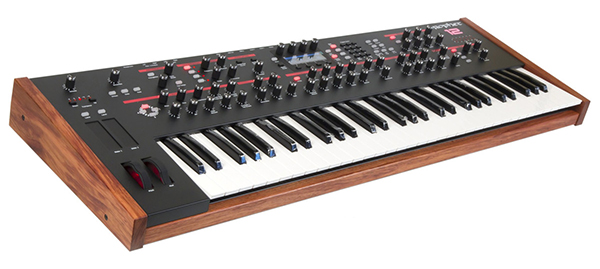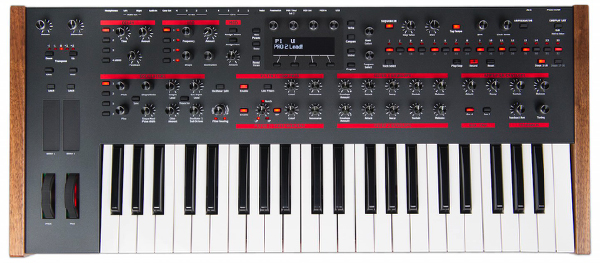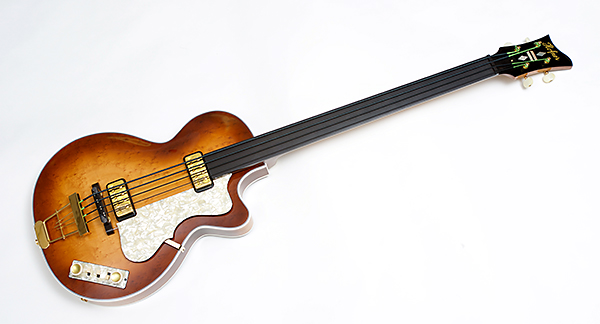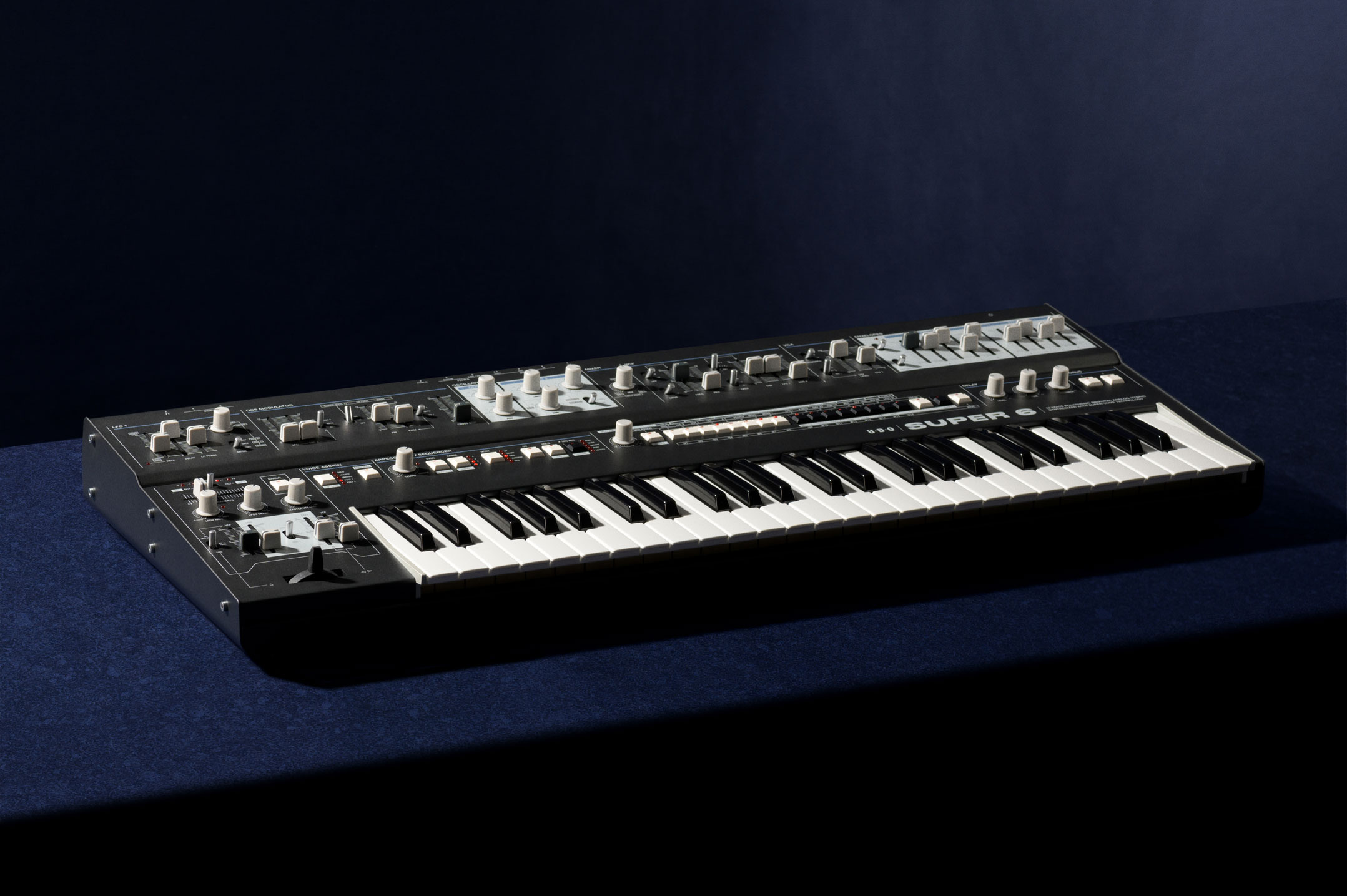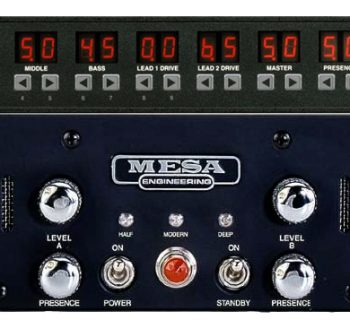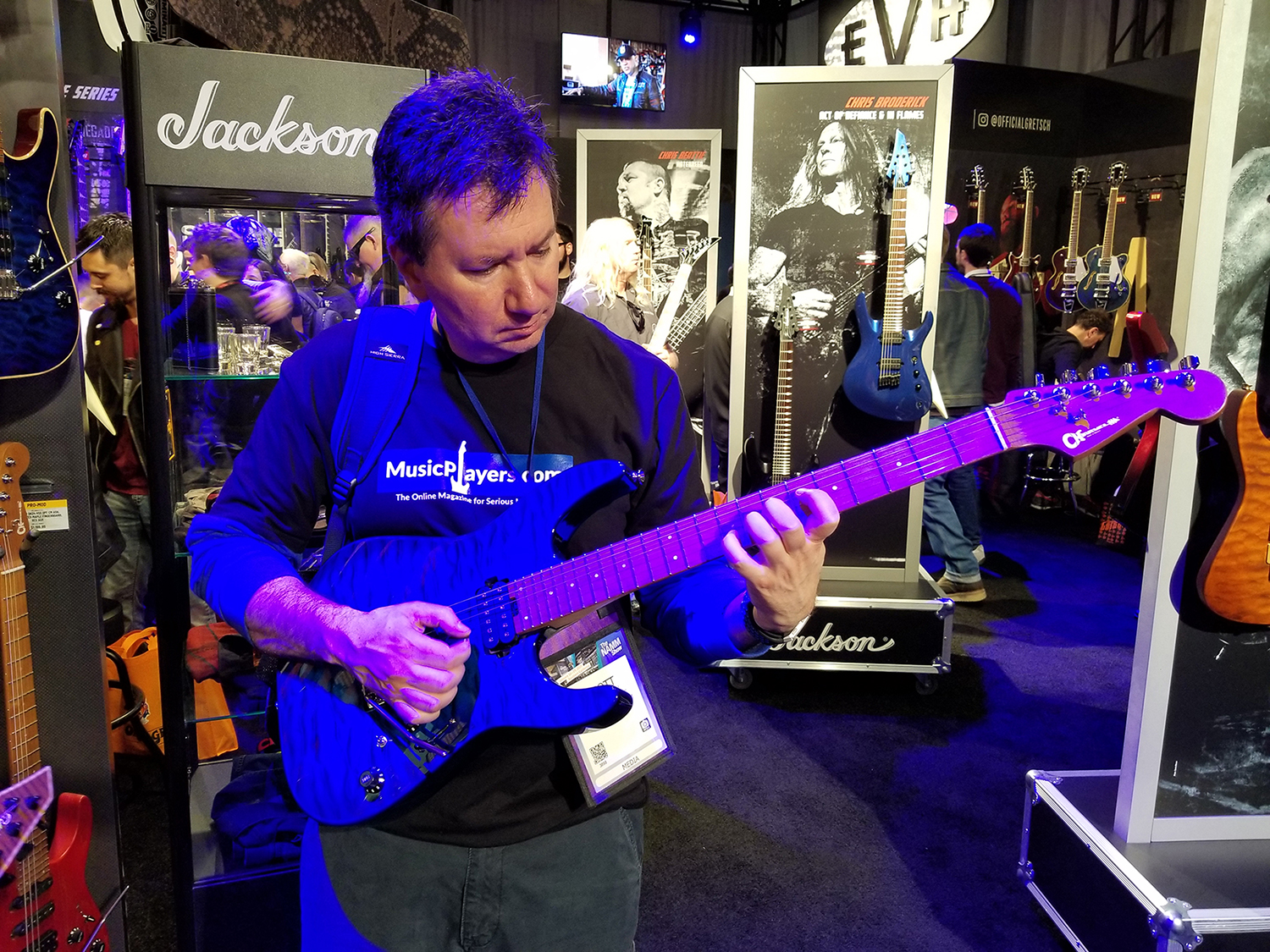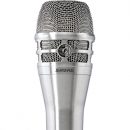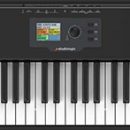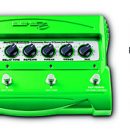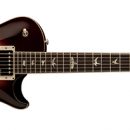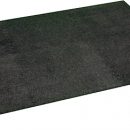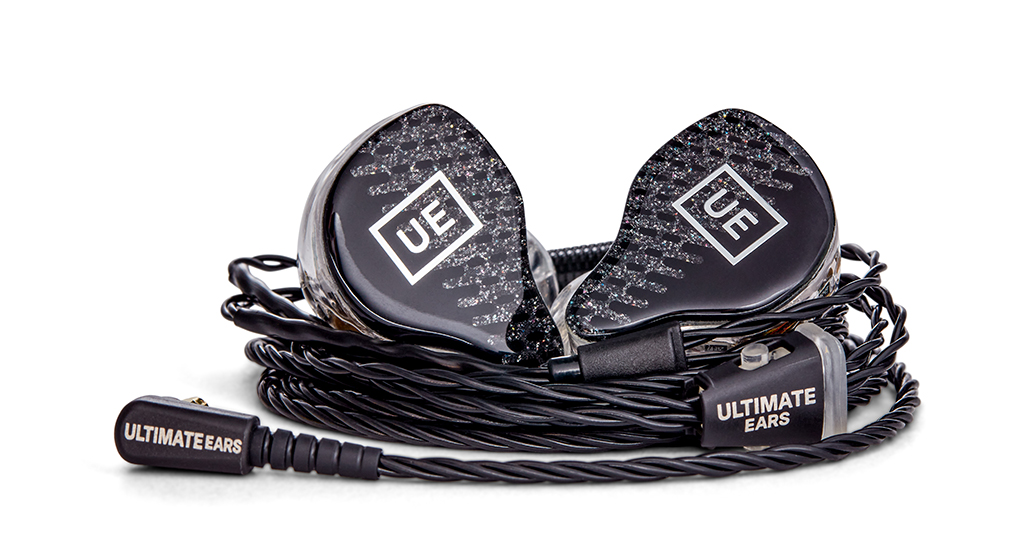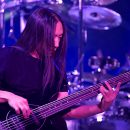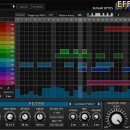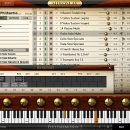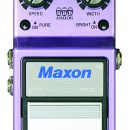 Gushing. Yes, we’re gushing over Dave Smith’s latest polysynth, the DSI Prophet 12. We first fell in love with the Prophet ’08, and thought that was analog synth heaven. But then Dave went ahead and decided that there was more work to be done in the name of the holy prophet, and thus the Prophet 12 was born.
Gushing. Yes, we’re gushing over Dave Smith’s latest polysynth, the DSI Prophet 12. We first fell in love with the Prophet ’08, and thought that was analog synth heaven. But then Dave went ahead and decided that there was more work to be done in the name of the holy prophet, and thus the Prophet 12 was born.
Easily one of the finest sounding, classic polysynths ever made, the Prophet 12 earns high marks for delivering a fantastic blend of digital/analog hybrid goodness.
| Category | Value | Rating |
| Features | 20% | |
| Usability | 25% | |
| Sound | 25% | |
| Documentation & Support | 10% | |
| Price | 20% | |
|
|
||
| OVERALL RATING = 3.7, which earns it a WIHO Award! 3.6 stars or better: Outstanding, WIHO Award 3 stars or better: Worth considering 2 stars or better: Suited to specific needs 1 star or less: Not recommended |
||
Digital waveforms deliver tonal variety, while the analog filters (classic Curtis design) keep the sound firmly in the Prophet family.
Some synths are thought of in terms like: deep, vast, complex. Gearheads love to program them without regard for songwriting and performance, while actual keyboard players scroll through the presets looking for cool sounds to use as-is. The Prophet 12, however, can be thought of in terms like: musical, engaging, fun. This is a synth for keyboard players who love classic synth textures, who want easy tweakability and tons of instant, real-time control, and who don’t feel the need to bury their heads in a manual for days on end. If you’re a serious keyboard player in need of a workhorse, flexible, analog polysynth that you can bend to your will at ease, this is a keyboard that belongs at the top of your list.
Features
The DSI Prophet 12 shares strikingly good looks with its newest sibling, the DSI Pro 2, featuring red LED, backlit pitch and mod wheels, a backlit number 12 on the instrument panel, red illuminated buttons, finely etched graphics and labels, and walnut wood trim surrounding its black metal innards. As synthesizers go, this is one hot looking keyboard that just oozes awesomeness. It’s also lightweight and rather compact, making it a breeze to transport. We all know that beauty is more than skin deep, though, and the Prophet 12’s inside is where you’ll move from teenaged infatuation to a deeper love relationship.
[Before digging in here, you may also want to read our review of the DSI Prophet ’08 here… ]
The Prophet 12 is—as the name suggests—a twelve-voice synthesizer. But, you can alternately think of it like two six-voice synths in one box where each sound (called a program) is comprised of two, six-voice synths split or layered in every preset.
Unlike its siblings in the Prophet range and much of the DSI lineup, the biggest difference is that the Prophet 12 is a hybrid analog/digital synthesizer. The beauty of this arrangement is a best-of-both-worlds approach: you get four traditional waveforms (saw, square, triangle, sine) plus an additional twelve waveforms that go well beyond the basics, featuring complex wave shapes that expand the range of sounds you can create exponentially.
You’re not limited to just one of those waveforms at a time, however, since you can string up to three of them in series and have them crossfade. It shouldn’t be confused with wave sequencing (which Dave co-developed back in the days of the DSI Prophet VS and subsequent Korg Wavestation), but it definitely creates more complex waveforms than any traditional analog synth.
 There are five digitally controlled oscillators per voice, and three different types of programmable noise per oscillator. Oscillators feature both amplitude modulation (AM) and frequency modulation (FM), and while you’re not going to play this synth and think DX7, this certainly contributes to the variety of sounds you will hear—which far eclipse what you’ll get out of other Prophets new and old.
There are five digitally controlled oscillators per voice, and three different types of programmable noise per oscillator. Oscillators feature both amplitude modulation (AM) and frequency modulation (FM), and while you’re not going to play this synth and think DX7, this certainly contributes to the variety of sounds you will hear—which far eclipse what you’ll get out of other Prophets new and old.
Not sounding much like the description of a Prophet synth? Have no fear, because after you get past the digital front end, along comes all of the analog goodness you’ve come to know and love from Dave Smith: the classic Curtis 2- or 4-pole resonant low-pass filters on each voice, and a 2-pole resonant high-pass filter. Yes, this is the stuff that gave the Prophet 5 its characteristic sound.
The Prophet 12 features four LFOs (syncable to the arpeggiator or MIDI), four Delay+ADSR envelopes, and a ridiculously deep modulation matrix that features twenty-six modulation sources and ninety-seven modulation destinations! Despite the lack of an on-board step sequencer, building sounds with the programmable arpeggiator enables the creation of many Arp-like sounds.
The arpeggiator offers your typical assortment of controls, and we love that there are both a tap tempo button and a BMP knob for setting tempo, with one being precise in the studio, and one perfect for live performance with humans.
There are a basic selection of analog and digital effects. Each of the four (stereo) delay lines can be up to one second long, and it’s possible to create reverb-like ambience as well as traditional modulation and delay effects.
There are multiple ways to distort your sounds in the Prophet 12, including analog distortion as well as digital bit-rate reduction (Decimation) and simulated tape saturation (Drive).
 There are a pair of stereo outputs, and when your program utilizes two layers for splits or stacks, if you connect all four outputs, the first program layer gets routed to one output and the second program layer gets routed to the other. The synth can be easily reconfigured for use in mono if desired.
There are a pair of stereo outputs, and when your program utilizes two layers for splits or stacks, if you connect all four outputs, the first program layer gets routed to one output and the second program layer gets routed to the other. The synth can be easily reconfigured for use in mono if desired.
The Prophet 12 features a five-octave, semi-weighted keyboard with velocity and aftertouch. In addition to traditional pitch and modulation wheels, the Prophet 12 also features two programmable sliders, which are mini ribbon controllers that you can assign to just about any parameter.
There are connections for a sustain pedal plus two additional assignable pedals, and the usual MIDI In/Out/Thru connections. Additionally, a USB port is provided for easy computer connectivity (for third-party software editors—not audio).
The Prophet 12 contains 396 programs organized into four non-writable factory banks (99 programs per bank), and a copy of those programs resides in four user banks, which can be overwritten with your own sounds. If you fill the user banks with a huge collection of your own sounds, then ultimately, you could end up with 792 unique programs.
Happily, power is provided via a standard IEC power cable.
Usability
Dave Smith knows interface design, and the typical working/performing musician will be immediately at home with 90% of the Prophet 12’s functionality. This is a straight-to-the-point synth that is easy to program and fun to use, while deeper programming parameters are available to the more studious sound designers.
The control panel is laid out in a logical signal flow arrangement, with oscillators to the left, general tone shaping in the middle, and VCAs and effects to the right. Most controls have a one-to-one correlation with their knobs, but many features have additional controls that are accessible via a sharp, white, OLED display. A few “soft” control knobs easily correspond to items on the display, and nothing is buried deep within the interface, but the majority of knobs are familiar analog potentiometers.
There are handy shortcuts built into the interface to make quick work of sound design. We appreciated that rather than having to adjust envelope settings on each of the four oscillators, for example, holding in one of the oscillator select buttons for a few seconds enables a “modify all” function, where your settings are applied to each of the oscillators concurrently.
DSI really have the details covered, as there are a variety of settings we were able to customize. For example, what happens when you want to adjust your selected program’s attack, or the frequency and resonance of the low-pass filter? When you touch the corresponding pot, you can customize whether or not the sound jumps immediately to the physical setting, or if the sound “stays put” until you turn the knob past the actual saved value… and the knob appears virtually on the OLED display, so you can see what you’re about to change before making the change. Nice!
Other things we loved: the sliders! Let’s say that you’ve got one of them assigned to the low-pass frequency, which creates a massive shift in the overall timbre of your program. Sliding up adjusts your sound in real time, and as soon as you lift your hand off the control, it jumps back to the saved value. That’s cool. But what we also loved is that just as easily, you can select the Latch button right above it, and this freezes the control at whatever point you lift your finger, without reverting to the saved value. It’s details like this that make the synth so playable: the Prophet 12 lets you work however you want, quickly, and with keyboard players in mind more than sound tweakers.
Sound tweakers and single-key musicians, fear not. Another awesome finishing touch is that the Prophet 12 has a Hold button that lets you instantly set the synth to hold a note, chord, etc., which makes it very easy to explore real-time manipulation of your sound without having one hand tied to the keyboard or your foot glued to a sustain pedal.
There’s more to this synth, of course, but the bottom line is that it’s a blast to program—no degree necessary, the keyboard action and size feels great, and the controls and operation are all extremely logical. If only every synth were so well thought out.
Sound
Let’s get the controversy started. Oh wait… there is none, because we’re laying down the iron fist of opinions here: if you’ve read any posts online from analog synth snobs who say “it’s digital” or “it’s not a real Prophet” or other crap like that, the reality is that they haven’t actually played this synth for more than a passing moment at best.
There’s a valid reason why Dave Smith has been quoted numerous times commenting that this is his favorite synth that he’s designed: it is easily one of the best sounding hybrid analog/digital polysynths ever made, taking all the right advantages of what digital oscillators can do, while preserving all of the rich tone that analog filters can provide. And it’s our favorite Prophet ever, too!
The Prophet 12 has a sound of its own that easily sounds “like a Prophet,” no doubt thanks to the Curtis filters and the general signal path. But the digital oscillators give it a much broader variety of sounds than any pure analog synth is capable of.
Are you going to hear a difference in the sound of the digital waveforms generating the familiar waveforms of sawtooth, sine, square, triangle? No. People get hung up on that, but it’s all the analog stuff that follows the formation of the waveform shape that impart the analog warmth and color. But then, the Prophet 12 gives you other waveforms, with sounds of vocal formants and different noises and other colors that contribute to the variety of sounds this synth creates. And then, it combines waveforms, and lets you easily adjust the default waveform shapes in linear and non-linear ways, making it quite capable of creating new sounds.
Pads and synth string sounds are top flight here, and there are numerous classic sounding programs that conjure up images of music from the ‘70s and ‘80s. It’s easy enough to create sounds that are luxuriously thick sounding in the lower registers, so resist the urge to double-up those bass octaves. When playing the more traditional analog synth programs, the board is decidedly Prophet-like in tone.
Where things get even more exciting is when the sounds come alive, and there are tons of sounds that evolve over time, whether because of the clever waveform varieties or because of the arpeggiator. You can create some nice sounds with vocal formants in them, and the digital waveforms enable you to create sounds with brighter timbre than a pure analog synth. It’s got some cool spacey synth texture capabilities, and it’s easy to add percussive elements to the sounds, too. The Prophet 12 is also capable of generating some excellent organ sounds!
Whether for leads or just fattening up rhythm sections, the analog distortion is nothing short of fantastic. It’s so musical across its entire range that we came away extremely impressed. Maybe Dave should build us a guitar amp next! In fact, the Prophet 12 generates some of the prettiest noise and noise-based sounds that we’ve come across.. but only those times when we specifically want to dial in some noise, of course.
The Prophet 12 can be summed up in one word: musical. The programming isn’t as deep as you’ll find on pure digital fare, but compared with straight analog boards, you can dial in a huge range of sounds. And while maybe it won’t be a love-fest for the modular synth community and totally obsessed sound designer crowd, for actual keyboard playing musicians, this synth was made for you. And for us. In fact, not only do we plan to purchase the review unit, we need to order another one for another member of the editorial team.
Documentation and Product Support
The Prophet 12 comes with a very well written manual, with explanations of all of the functions and controls. Anyone experienced with analog synths and sound programming will find it immediately useful, not to mention players getting an overall feel for the operations and functions of the synth.
Our only wish: that the documentation would provided more in the way of tutorials for newbies to learn more of the how and why about sound design with the Prophet 12. So, it’s great for operation and control, but not so great in helping you to achieve specific sonic goals.
Dave Smith himself is the featured artist in a wide range of introductory videos on the DSI website that explore various features of the synth. Those are definitely worth checking out, and they help fill in some of the gaps for players just getting into sound design.
Price
The DSI Prophet 12 (MSRP $3,299) sells for $2,999 street. It’s not cheap, but then you’re getting an American-made synthesizer with premium components throughout, real wood sides, that isn’t mass produced, and that has the legendary sound and playability that DSI synths provide. You’ll still be playing this keyboard decades from now.
Other Comments
The big question we hear frequently is this: should I get a Prophet ‘08 or a Prophet 12? They do sound different from one another, and we will admit, we do get the sense of a “thicker” sound from the all-analog Prophet 8.
With its more limited selection of waveforms, if your goal is to get an updated version of the classic Prophet 5, then the Prophet ‘08 is a great way to go, and you’ll save $800. The Prophet ’08 gives you the classic sounds, updated, with cleaner output, modern tuning stability, and a host of technology improvements and updated features. But if you want something with more variety of sound that retains the familiar Prophet vibe yet also goes into more modern synth territory sonically, we’d suggest going with the Prophet 12.
There are a few other differences to be aware of:
| Prophet ‘08 | Prophet 12 |
| Full analog synth | Digital/Analog hybrid synth |
| (8) voice polyphonic | (12) voice polyphonic |
| Pitch and mod wheels positioned above the keyboard; no programmable ribbon sliders | Pitch and mod wheels to left of the keyboard; (2) programmable ribbon sliders |
| (2) banks of 128 sounds each | (8) banks of 99 sounds each |
| 16 x 4 gated step sequencer | No sequencer |
| Wall wart external power supply | Standard IEC power cable |
| Street: $2,100 | Street: $2,999 |
Contact Information
Dave Smith Instruments
www.davesmithinstruments.com
Evaluation Shortlist
- DSI Prophet '08
- John Bowen Solaris
- Access Virus TI2
- Roland Jupiter 80

